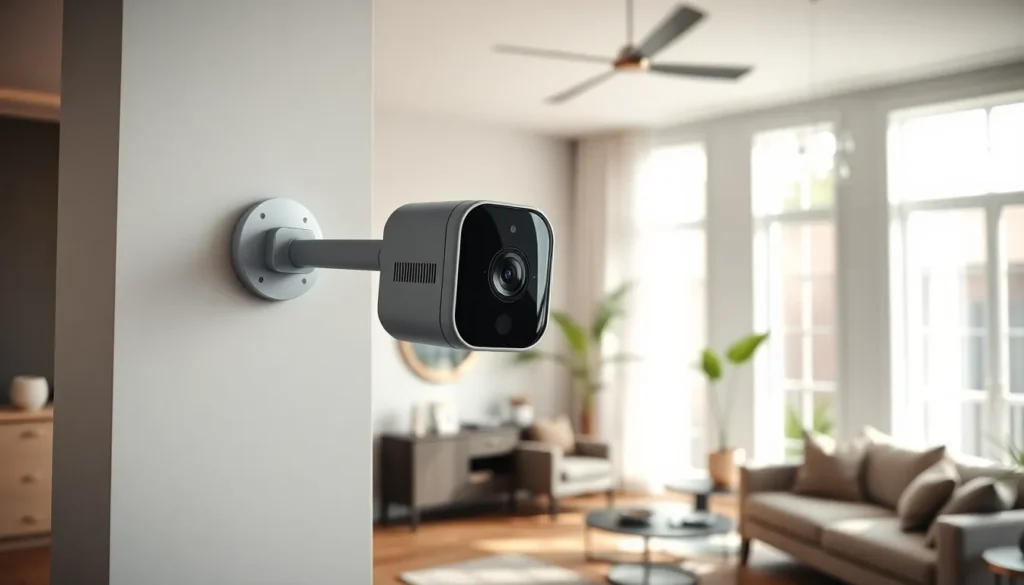In the wild world of fundraising, tiered goal funding stands out like a unicorn in a field of horses. Imagine setting a goal that not only motivates but also rewards backers at various levels. It’s like a buffet of giving, where everyone leaves happy and satisfied. Whether you’re a startup looking to launch the next big thing or a nonprofit aiming to change the world, this approach can make your campaign as enticing as a chocolate fountain at a party.
What Is Tiered Goal Funding?
Tiered goal funding refers to a fundraising strategy that organizes financial goals into multiple levels. Each level offers backers distinct rewards or incentives, encouraging contributions at various thresholds. Startups and nonprofits alike utilize this approach to create more engaging and dynamic campaigns.
This funding method enhances donor motivation by providing clear milestones to achieve, motivating contributions. For instance, a campaign might set its initial goal at $10,000 while offering rewards that escalate based on funding levels. If the campaign reaches $15,000, backers might receive exclusive updates or merchandise.
Enthusiasm often grows as additional funding goals are met, establishing a community around the campaign. Higher funding levels might include personalized experiences or unique recognitions, fostering a sense of collective achievement.
The tiered structure transforms passive donors into active participants, promoting ongoing engagement throughout the campaign. It also opens opportunities for different backer demographics by catering to various budgets.
Successful examples of tiered goal funding can be found across platforms like Kickstarter and Indiegogo. These platforms demonstrate how setting clear, achievable goals attracts diverse supporters while nurturing excitement around the project.
Tiered goal funding offers a flexible, rewarding way to enhance fundraising efforts. This strategy engages backers and cultivates a supportive community around a common cause, making it a powerful tool for effective fundraising.
Benefits of Tiered Goal Funding
Tiered goal funding offers significant advantages, making it an appealing approach for various fundraising initiatives. This method emphasizes flexibility and motivation for both contributors and organizers.
Increased Flexibility
Tiered goal funding provides multiple funding levels, allowing projects to adapt as goals evolve. Contributors can choose different tiers based on their ability to give, making it easier for a wider audience to participate. Each level represents a unique financial target, ensuring that progress is noticeable, even at lower thresholds. This approach fosters an environment where projects can continuously pivot in response to donor engagement. Campaigns can adjust their goals dynamically; aligning them with donor interest creates a responsive funding ecosystem.
Enhanced Motivation
Motivating contributors stands as one of the main strengths of tiered goal funding. Clear milestones lead backers to understand the impact of their contributions. Celebrating each achieved goal turns supporters into advocates, driving increased engagement. As campaigns reach higher tiers, excitement builds, often leading to a snowball effect in donations. Fundraisers can create a sense of urgency and community, empowering donors to feel connected to the cause. Engaging backers through tailored rewards further strengthens this motivation and commitment to the project.
Challenges of Tiered Goal Funding
Tiered goal funding presents several challenges that projects must address for successful implementation. Understanding these obstacles ensures campaigns maintain momentum and engage supporters effectively.
Potential for Misalignment
Misalignment often occurs between donor expectations and project goals. Contributors might interpret tiers differently, leading to dissatisfaction if rewards don’t meet anticipated outcomes. Startups and nonprofits must communicate clearly about what each tier entails. If campaign objectives shift, adjusting tiers without alienating backers can prove difficult. Regular updates and transparent discussions help maintain trust and align all parties with the campaign’s direction.
Resource Allocation Issues
Resource allocation can become complicated in a tiered system. As projects reach different funding milestones, distributing resources effectively becomes paramount. Prioritizing the most critical needs while balancing various tier rewards can strain limited resources. Additionally, projects may face challenges in fulfilling promises made to backers across multiple levels at once. Establishing a clear plan for resource deployment ensures each milestone receives appropriate attention, maintaining backer confidence in the project’s execution.
Implementing Tiered Goal Funding
Implementing tiered goal funding involves a clear understanding of the process and best practices for success. This strategic approach enhances fundraising potential and donor engagement.
Steps to Get Started
Identify distinct funding levels based on project needs and donor capacities. Craft clear descriptions for each tier, detailing the rewards and the impact of contributions. Set achievable goals to maintain momentum and excitement. Launch the campaign on a suitable platform, like Kickstarter or Indiegogo, aligned with the audience’s interests. Promote the initiative through social media, email newsletters, and community outreach to attract potential backers. Track progress closely, adjusting strategies as needed to ensure targets remain visible and engaging for contributors.
Best Practices for Success
Maintain transparency throughout the campaign by providing regular updates on funding milestones. Communicate openly about challenges and successes to build trust among supporters. Celebrate achievements, showcasing how each contribution makes a difference. Foster a sense of community by engaging with backers through feedback and discussions. Tailor rewards at each tier to appeal to specific donor demographics, enhancing satisfaction and encouraging further support. Strive for a balanced allocation of resources, ensuring all backers receive their promised rewards promptly.
Tiered goal funding stands out as an innovative strategy that not only enhances fundraising efforts but also fosters a sense of community among supporters. By offering distinct rewards at various levels, it transforms passive donors into active participants who feel invested in the project’s success. This approach encourages engagement and motivates contributors to reach higher milestones, creating a dynamic funding environment.
While challenges exist, such as aligning donor expectations with project goals, clear communication and careful planning can mitigate these issues. With the right execution, tiered goal funding can significantly elevate a campaign’s appeal and effectiveness, making it a valuable tool for startups and nonprofits alike. Embracing this method could lead to a more engaged and supportive donor base, ultimately driving successful outcomes for various initiatives.













